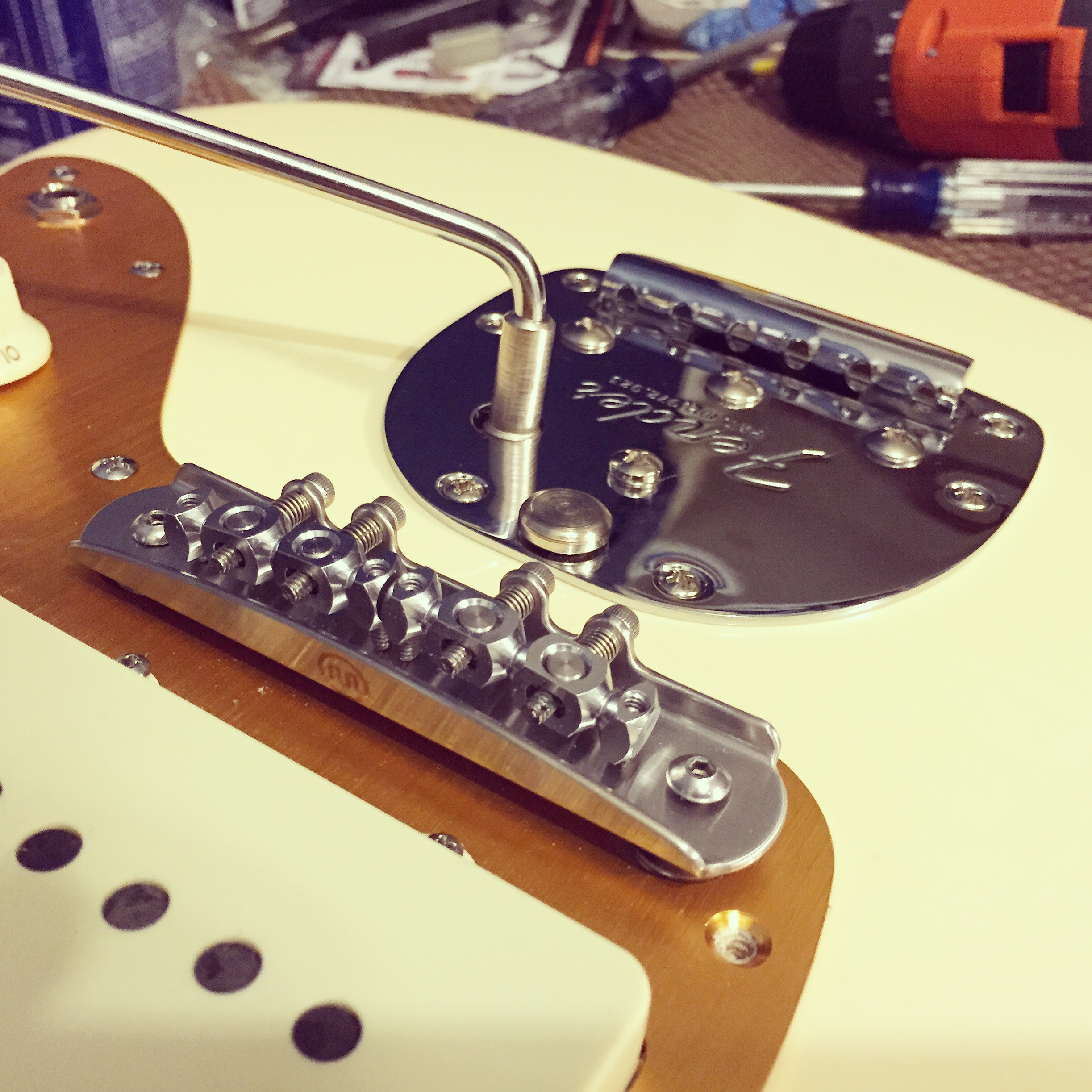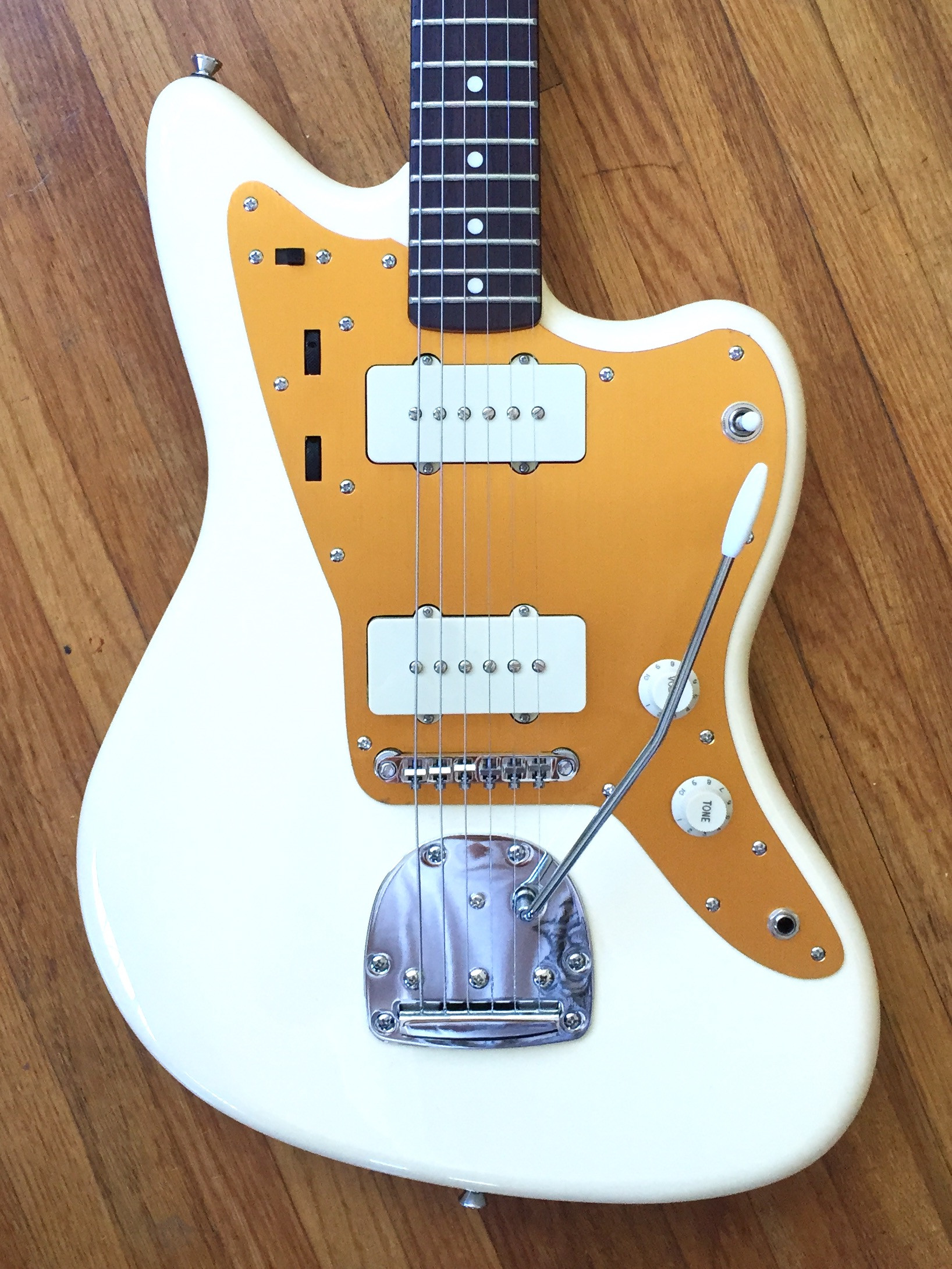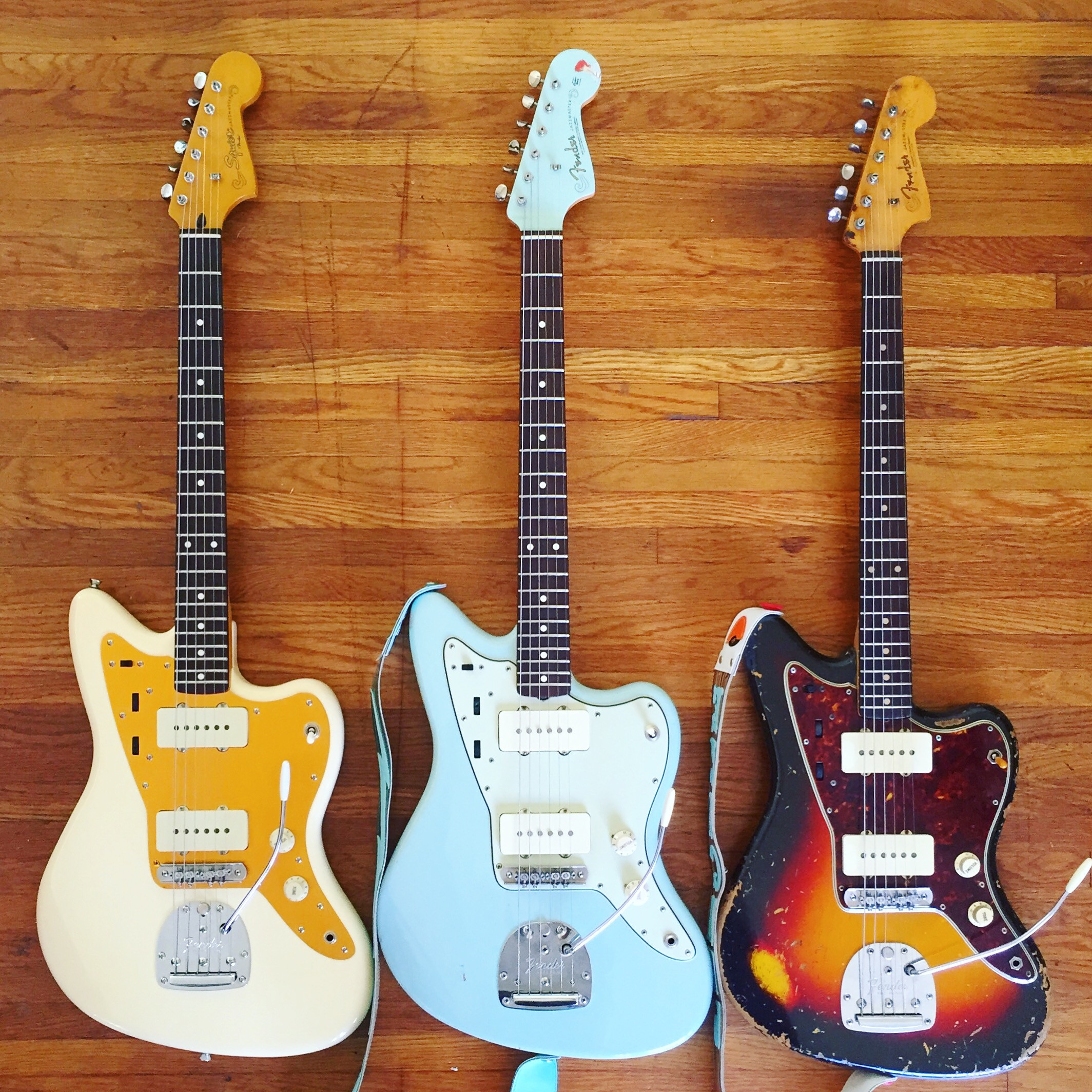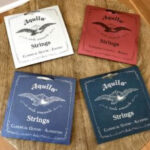The Squier J Mascis Jazzmaster (JMJM) has become a favorite among guitarists for its affordability and playability right out of the box. At Mike And Mike Guitar Bar, we often get asked about modifications for this model. Recently, a friend named Brent brought in his JMJM seeking our expert opinion on potential upgrades to take his guitar to the next level. While the JMJM is commendable in its stock form, offering a great neck and decent pickups for the price, there’s always room to enhance its performance and sound. Let’s dive into the modifications we explored at Mike and Mike Guitar Bar to truly unlock the potential of the Squier J Mascis Jazzmaster.
As we assessed Brent’s guitar here at Mike and Mike Guitar Bar, we considered several key areas for improvement. The JMJM already boasts a comfortable neck and aesthetically pleasing Jazzmaster appointments. However, for players seeking a more authentic Jazzmaster experience or simply wanting to maximize their instrument’s quality, certain upgrades can make a world of difference. Our focus at Mike and Mike Guitar Bar is always on practical, impactful modifications that deliver tangible benefits.
Tuners: Surprisingly Solid Stock Performance
Often, tuners are the first component guitarists consider replacing on budget-friendly guitars. However, with the Squier JMJM, the stock tuners are surprisingly adequate. At Mike and Mike Guitar Bar, we believe in practical upgrades, and in this case, the tuners passed muster. As long as you understand the correct way to string slotted posts – inserting the string into the hole and ensuring 3-5 wraps – these tuners perform admirably, even comparable to those on Squier VI models. Therefore, we didn’t see a necessary upgrade in this area, focusing instead on components that would yield more significant improvements.
Pickups: Stepping Closer to True Jazzmaster Tone
While the stock pickups in the JMJM are often described as “decent,” they deviate from traditional Jazzmaster pickups in construction and sound. Technically, they are P90-style pickups disguised as Jazzmasters, featuring large bar magnets, adjustable poles, and a hotter, taller coil winding. For players chasing that quintessential Jazzmaster sparkle and clarity, these stock pickups fall short. Furthermore, even within the realm of P90s, superior options exist. At Mike and Mike Guitar Bar, pickup upgrades are a frequent recommendation for JMJM owners seeking a more refined and authentic Jazzmaster voice. Swapping out the pickups is a crucial step in achieving a richer and more articulate tone.
Electronics: Enhancing Reliability and Signal Path
Electronics are a common area where budget guitars can falter. Squier models, including the JMJM, sometimes suffer from unreliable wiring and lower-quality components, leading to potential shorts and signal issues. On Brent’s guitar, rather than a complete rewire, we at Mike and Mike Guitar Bar opted for a meticulous inspection of the existing wiring, reflowing any suspect connections to improve immediate reliability. However, for long-term dependability and sonic improvement, we generally advise a complete electronics overhaul. Replacing the stock wiring, pots, and switch with higher-quality components is a worthwhile investment, ensuring a cleaner signal path and greater longevity for your instrument.
AOM/TOM Bridge: Addressing Offset Guitar Bridge Challenges
The Adjust-O-Matic/Tune-O-Matic (AOM/TOM) bridge is a point of contention for offset guitars like the Jazzmaster. At Mike and Mike Guitar Bar, it’s the bridge style we least recommend for these instruments, citing both sonic and setup limitations. AOM/TOM bridges typically have a radius that doesn’t match the curvature of common Fender necks (7.25” and 9.5”), even with saddle adjustments. This mismatch results in uneven string tension, particularly making the outer E strings feel stiffer.
 IMG_8439
IMG_8439
Close up of the bridge and pickups of a Squier J Mascis Jazzmaster at Mike & Mike Guitar Bar before modifications.
Beyond radius issues, AOM/TOM bridges don’t inherently solve common complaints associated with traditional Jazzmaster bridges, such as buzzing and instability. Brent’s JMJM already exhibited buzzing, which we partially remedied by reseating the saddles. Additionally, a shallow slot on the low E saddle caused the string to jump out during aggressive playing. Therefore, a bridge replacement is often recommended at Mike and Mike Guitar Bar.
Our go-to solution is typically the Mastery Bridge, though it necessitates removing the original AOM/TOM inserts, filling the holes, and redrilling – a more involved procedure. Staytrem offers a less invasive alternative with drop-in thimble replacements. While Staytrem previously offered a direct AOM/TOM replacement, it appears to be discontinued. When considering bridge upgrades at Mike and Mike Guitar Bar, we weigh factors like desired level of modification and player preferences.
The Vibrato: Enhancing Tremolo Performance and Tuning Stability
If you are a frequent user of the vibrato system, upgrading this component on a JMJM is highly advisable. As discussed in our previous blog post concerning import vibrato quality issues, these units often suffer from sloppy internal tolerances, negatively impacting tuning stability. Even for casual vibrato users, the improvement in feel and reliability is noticeable.
For Brent’s guitar, we opted for an American Vintage Reissue (AVRI) tremolo unit sourced from eBay user trickedoutguitar. This provided the correct AVRI arm with the preferred bend. Mastery also manufactures an exceptional vibrato system, which Mike and Mike Guitar Bar highly recommends for players who heavily utilize the tremolo. Upgrading the vibrato is crucial for achieving smooth, responsive tremolo action and maintaining rock-solid tuning stability, especially under more demanding playing styles.
 FullSizeRender_1
FullSizeRender_1
Mike from Mike & Mike Guitar Bar assessing a Squier J Mascis Jazzmaster for potential upgrades.
After our initial consultation at Mike and Mike Guitar Bar, we presented Brent with a list of recommended upgrades. This included Seymour Duncan Antiquity I pickups, a Mastery M1 bridge kit, and an AVRI tremolo. While the Mastery components and premium pickups represent a significant investment relative to the JMJM’s price point, Brent sought a guitar that would meet his professional needs without requiring further modifications down the line. We concurred with his approach, believing in investing in quality for long-term satisfaction.
Following the upgrades and a meticulous setup performed here at Mike and Mike Guitar Bar, the transformation was remarkable. The tonal difference, both acoustically and amplified, was immediately apparent. The guitar, previously sounding adequate plugged in but somewhat lifeless acoustically, gained a newfound resonance and vibrancy thanks to the improved fit of the Mastery bridge and thimbles. The upgraded tremolo operated with exceptional smoothness, responsiveness, and tuning stability.
When clients ask about our preferred Jazzmaster pickups at Mike and Mike Guitar Bar, Lollar, Novak, and Seymour Duncan Antiquity I pickups consistently top our list. We find the Duncan Antiquity Is particularly adept at capturing the nuanced sound and dynamic response of vintage black-bobbin pickups from the 1960s. In Brent’s JMJM, the new pickups imparted a maturity and complexity that belied the guitar’s recent production date. The resulting tone exhibited the sought-after warmth and midrange richness associated with prized vintage pickups, sounding organic and full of character.
 IMG_8523
IMG_8523
Brent’s upgraded Squier J Mascis Jazzmaster from Mike & Mike Guitar Bar, pictured with vintage ‘Pancake’ Jazzmaster and ‘Artoo’ Thin Skin Jazzmaster.
The improvement was so significant that we decided to record a comparison video, pitting Brent’s upgraded JMJM against my personal 1961 Jazzmaster affectionately nicknamed “Pancake,” which I consider the finest guitar I’ve ever played. In a last-minute decision, we also included “Artoo,” my 2007 Thin Skin Jazzmaster equipped with Lollar pickups. Despite using only an iPhone microphone due to time constraints, the video effectively captured the sonic distinctions between these guitars. You can check out the comparison here: https://www.youtube.com/watch?v=hh4PquogfzU
Ultimately, Brent was thrilled with the transformed JMJM, and so were we at Mike and Mike Guitar Bar. These targeted upgrades demonstrate how a good instrument can be elevated to greatness with thoughtful modifications, enhancing both its tone and playability. For JMJM owners seeking to maximize their guitar’s potential, the upgrades discussed here offer a proven path to achieving a truly exceptional instrument.

